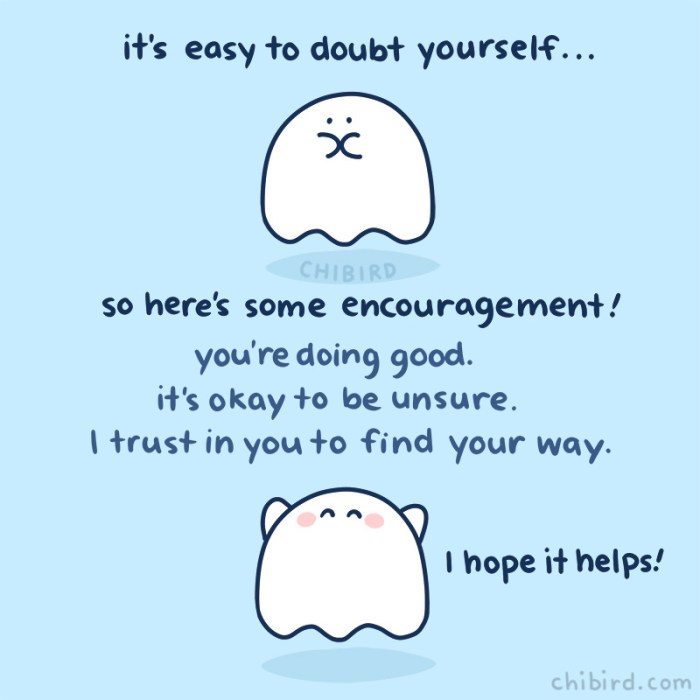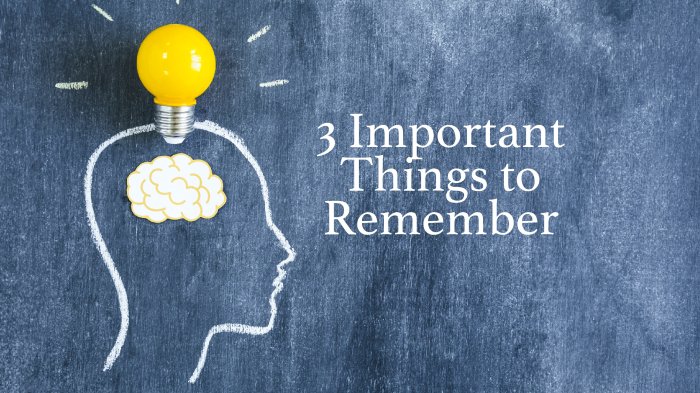Sometimes you just need a bit of motivation. This isn’t just a feel-good phrase; it’s a crucial element in navigating life’s ups and downs. From everyday tasks to achieving monumental goals, motivation acts as the engine driving us forward. This exploration dives deep into understanding what fuels motivation, identifying triggers, recognizing a lack thereof, and developing strategies to reignite that spark, maintain it, and apply it across various aspects of life, be it personal, professional, or academic.
We’ll explore different theories of motivation, examining the intricate interplay of internal and external factors, needs, desires, and psychological influences. We’ll also look at practical techniques for boosting motivation, including setting achievable goals, overcoming demotivation, and maintaining that drive over time. Understanding these concepts will help you not just feel motivated but also cultivate a sustainable drive for success and well-being.
Understanding Motivation
Motivation is a powerful force driving human behavior. It’s the internal and external factors that initiate, guide, and maintain goal-directed actions. Understanding the complexities of motivation allows us to better navigate our own aspirations and the actions of others. This exploration delves into the multifaceted nature of motivation, exploring its definitions, types, and the influential psychological factors behind it.Motivation is not a simple concept; its definition varies depending on the context and perspective.
Some view it as the process of activating and sustaining goal-directed behavior, while others see it as the drive to pursue desired outcomes. This nuanced perspective highlights the dynamic and intricate nature of human motivation.
Definitions of Motivation
Motivation is a multifaceted concept, encompassing various perspectives. Different theories and frameworks offer distinct definitions, reflecting the complexities of human behavior. The drive-reduction theory suggests motivation arises from biological needs, while the incentive theory emphasizes the role of external stimuli in motivating actions. Cognitive theories, conversely, focus on mental processes like expectations and beliefs. Ultimately, the most comprehensive understanding recognizes motivation as a complex interplay of biological, psychological, and environmental factors.
Types of Motivation
Understanding the different types of motivation is crucial for comprehending the underlying drivers of human behavior. Intrinsic motivation stems from internal rewards, such as a sense of accomplishment or personal satisfaction. Extrinsic motivation, on the other hand, arises from external factors, such as rewards, praise, or avoidance of punishment. The interplay between these two types shapes our actions and choices in a variety of contexts.
- Intrinsic motivation is fueled by internal rewards, such as a sense of accomplishment, curiosity, or enjoyment. For example, a student might choose to study a subject they find fascinating, driven purely by their interest and desire to learn.
- Extrinsic motivation is propelled by external rewards, such as grades, money, or recognition. A student might study diligently to earn good grades or a scholarship, motivated by external factors.
The Role of Needs and Desires
Needs and desires are fundamental drivers of motivation. Basic physiological needs, such as hunger and thirst, create strong motivations to satisfy them. Beyond these, psychological needs, like the need for belonging or self-esteem, are also powerful motivators. Desires, stemming from personal values, aspirations, and experiences, contribute to the complexity of motivation. Understanding these needs and desires is key to understanding the driving forces behind human behavior.
Psychological Factors Influencing Motivation
Numerous psychological factors shape an individual’s motivation. Cognitive factors, such as expectations, beliefs, and attributions, play a critical role. Emotional factors, including feelings of hope, fear, and anxiety, significantly influence the intensity and direction of motivation. Personality traits, such as conscientiousness or openness to experience, also contribute to individual differences in motivation. Environmental factors, like social support and access to resources, further shape the expression of motivation.
- Expectations about success influence effort and persistence. Individuals with high self-efficacy are more likely to persist in the face of challenges.
- Emotional states, such as anxiety or excitement, impact motivation. Fear of failure can diminish motivation, while anticipation of success can enhance it.
- Personality traits, like extraversion and introversion, can affect the way individuals approach tasks and the types of rewards that motivate them.
Comparison of Motivation Theories
Different theories offer varying perspectives on motivation. This table summarizes key aspects of prominent theories, highlighting their strengths and weaknesses.
| Theory | Key Concepts | Strengths | Weaknesses |
|---|---|---|---|
| Maslow’s Hierarchy of Needs | Hierarchical arrangement of needs, from basic physiological to self-actualization. | Provides a framework for understanding diverse motivations. | Difficult to empirically test and lacks precise definitions of needs. |
| Expectancy Theory | Motivation is a function of expectancy, instrumentality, and valence. | Offers a clear model of motivation based on cognitive processes. | May not account for complex emotional and social factors. |
| Goal-Setting Theory | Specific and challenging goals enhance performance. | Provides practical strategies for improving motivation and performance. | May not be applicable to all tasks or individuals. |
Identifying Motivation Triggers

Unveiling the factors that ignite our drive is crucial for understanding ourselves and achieving our goals. Motivation isn’t a singular force; it’s a complex interplay of internal and external influences. This exploration delves into the diverse triggers that spark our desire to act, from tangible rewards to deeply held personal values.Understanding these triggers empowers us to cultivate a more fulfilling and productive life by recognizing what truly motivates us.
It’s not just about knowing
- what* motivates us, but also
- how* those motivations manifest in our actions.
Common External Motivators
External factors often play a significant role in igniting our motivation. These factors can range from tangible rewards to social pressures. Recognizing these external influences can help us strategize to leverage them for positive outcomes. For instance, a bonus at work might incentivize a salesperson to work harder, or a public recognition for a charity fundraiser might inspire volunteers to participate more enthusiastically.
- Incentives and Rewards: Tangible rewards, such as bonuses, promotions, or monetary compensation, are powerful external motivators. These can significantly impact productivity and performance in various contexts, from professional settings to personal achievements. A clear connection between effort and reward is often essential for maximizing motivation in this area.
- Social Recognition and Approval: The desire for social approval and recognition is inherent in human nature. Positive feedback, praise, and acknowledgement from peers, colleagues, or mentors can significantly boost motivation and create a sense of belonging. This social element of motivation is especially prevalent in team-oriented environments or situations where individual contributions are valued and celebrated.
- Competition and Challenges: The competitive spirit and the pursuit of overcoming challenges can be strong motivators. The drive to outperform others or to achieve a difficult goal can fuel sustained effort and lead to exceptional performance. Athletes often cite competition and the challenge of personal records as significant motivators.
Influence of Personal Values and Beliefs
Our deeply held values and beliefs are often the driving forces behind our actions. They act as internal compasses, guiding our choices and shaping our aspirations. These internal values can transcend material rewards, motivating us to pursue goals aligned with our principles. For example, a strong belief in environmental conservation can drive someone to pursue a career in sustainability, even if it doesn’t offer immediate financial gain.
- Personal Values: Values like integrity, honesty, and compassion can profoundly influence our motivations. These values can guide our decisions and actions, even when faced with external pressures that might conflict with them. Individuals driven by strong personal values tend to exhibit greater consistency in their actions.
- Personal Beliefs: Personal beliefs, such as faith, philosophy, or a strong sense of purpose, can profoundly shape our motivations. These beliefs often provide a framework for understanding the world and our place in it, influencing our aspirations and guiding our behavior.
Role of Past Experiences
Past experiences, both positive and negative, play a significant role in shaping our current motivational patterns. Successes and failures, triumphs and setbacks, all contribute to the intricate tapestry of our motivations. Learning from these experiences allows us to navigate future challenges with greater resilience and clarity.
- Positive Experiences: Positive past experiences, like achieving a personal goal or receiving recognition for a hard-earned achievement, can foster a sense of self-efficacy and confidence. This increased confidence, in turn, can motivate us to pursue further challenges and strive for even greater accomplishments.
- Negative Experiences: Negative experiences, like failure or setbacks, can create a strong aversion to repeating similar patterns. They can shape future choices and behaviors, influencing our strategies for tackling future challenges. However, the crucial aspect is how we learn from these experiences and use them to inform our future actions.
Individual Responses to Motivational Stimuli
Motivation is not a one-size-fits-all phenomenon. Different individuals respond to the same motivational stimuli in various ways. Factors like personality, cultural background, and individual needs influence how people perceive and react to incentives, challenges, and rewards. A bonus might energize one employee, while another might view it as a fleeting reward.
| External Motivator | Potential Effects on Individuals |
|---|---|
| Incentives and Rewards | Increased productivity, improved performance, focused effort |
| Social Recognition | Enhanced self-esteem, increased engagement, improved team dynamics |
| Competition and Challenges | Higher performance standards, increased innovation, enhanced problem-solving skills |
Recognizing Lack of Motivation
Feeling uninspired and lacking drive can significantly impact your life, affecting everything from your work performance to your personal well-being. Understanding the signs and causes of demotivation is the first step towards reclaiming your motivation and achieving your goals. Recognizing these patterns allows you to proactively address the underlying issues and regain your enthusiasm.
Signs and Symptoms of Lack of Motivation
A lack of motivation manifests in various ways, impacting both your actions and your emotional state. Common signs include a general disinterest in activities you once enjoyed, procrastination, difficulty focusing, and a persistent feeling of apathy. This can also extend to a decreased sense of purpose and a diminished ability to initiate tasks. These symptoms can range from mild to severe, and their intensity can vary depending on the individual and the situation.
Common Causes of Demotivation
Several factors can contribute to a lack of motivation. These include overwhelming workloads, unrealistic expectations, feelings of burnout, and a lack of clear goals. Burnout often arises from prolonged stress and a lack of work-life balance. Unrealistic expectations can lead to feelings of inadequacy and frustration, making it difficult to feel motivated to achieve anything. Furthermore, a lack of clearly defined goals can make it challenging to focus energy and effort on specific targets.
Sometimes you just need a little nudge to get going, a boost of inspiration. Want to cultivate inner peace and a more positive outlook? Check out these 10 signs of good-tempered people, 10 signs good tempered people , to see how their approach might just be the key to unlocking your own inner motivation. Ultimately, sometimes you just need a little push to find that spark within yourself.
Impact on Productivity and Well-being
Lack of motivation directly impacts productivity. Procrastination and difficulty focusing lead to decreased efficiency and missed deadlines. This can create a cycle of frustration and further demotivation. On a broader scale, a sustained lack of motivation can significantly affect well-being. Feeling uninspired and unproductive can lead to increased stress, anxiety, and even depression.
This can negatively affect relationships and overall quality of life.
Impact on Personal Goals
Motivation is crucial for achieving personal goals. Without it, progress toward desired outcomes slows or stalls completely. This can result in feelings of disappointment and a sense of failure. The inability to maintain focus and drive can hinder progress in areas like career advancement, personal development, and relationship building. Ultimately, a lack of motivation can create a barrier to achieving your aspirations.
Addressing Demotivation: Strategies and Solutions
Motivational issues often stem from various underlying factors. Recognizing the source of demotivation is crucial for implementing effective solutions. The following table provides a framework for understanding different reasons for demotivation and the corresponding strategies for overcoming them.
| Reason for Demotivation | Strategies for Addressing It |
|---|---|
| Overwhelming workload | Prioritize tasks, break down large projects into smaller, manageable steps, delegate responsibilities where possible, and seek support from colleagues or mentors. |
| Unrealistic expectations | Re-evaluate goals and expectations, focus on achievable milestones, celebrate small victories, and adjust expectations as needed. |
| Burnout | Implement self-care practices such as exercise, healthy eating, sufficient sleep, and stress-reducing activities. Take regular breaks and disconnect from work when possible. Seek professional help if needed. |
| Lack of clear goals | Set specific, measurable, achievable, relevant, and time-bound (SMART) goals. Break down larger goals into smaller, more manageable steps. Regularly review progress and adjust goals as needed. |
| Lack of interest | Explore new interests, try different activities, seek out new challenges, or revisit hobbies that once brought joy. |
| Fear of failure | Challenge negative thoughts and self-doubt. Focus on learning from mistakes rather than dwelling on them. Identify past successes and build confidence. |
Strategies for Boosting Motivation: Sometimes You Just Need A Bit Of Motivation
Motivation, a crucial element in achieving personal and professional goals, often ebbs and flows. Understanding the triggers for both high and low motivation is vital. This section explores practical strategies to reignite that spark, overcoming demotivation, and setting realistic goals. We’ll delve into effective techniques, providing actionable steps and inspirational examples.Effective motivation strategies aren’t a one-size-fits-all solution. What works for one person might not resonate with another.
The key is to experiment and find the approaches that best align with your personal preferences and goals. By understanding your individual motivational drivers, you can tailor strategies to optimize your performance and well-being.
Effective Techniques for Reigniting Motivation
Motivation can be reignited through various techniques. Understanding and applying these strategies can be a game-changer in achieving personal and professional success. The strategies Artikeld below provide a roadmap for boosting motivation and overcoming periods of demotivation.
- Setting SMART Goals: Defining Specific, Measurable, Achievable, Relevant, and Time-bound goals provides a clear direction. These goals offer a tangible roadmap for progress, making it easier to track achievements and maintain momentum. For example, instead of “lose weight,” a SMART goal would be “lose 10 pounds in 12 weeks by incorporating 30 minutes of exercise daily and adjusting my diet.” This provides a clear target, measures for progress, and a time frame.
- Breaking Down Tasks: Large, daunting tasks can easily overwhelm and stifle motivation. Breaking down complex projects into smaller, manageable steps makes the overall goal less intimidating. This approach allows for consistent progress, providing a sense of accomplishment with each step completed. This incremental approach fosters a positive feedback loop, reinforcing motivation.
- Reward Systems: Rewarding yourself for achieving milestones, no matter how small, reinforces positive behavior and encourages continued effort. Rewards can be anything from a small treat to a larger purchase. These rewards act as motivators, helping maintain focus and drive. For instance, setting a goal to finish a chapter of a book and then enjoying a cup of tea afterward can create a powerful reinforcement loop.
- Seeking Support and Accountability: Sharing goals with others, whether friends, family, or colleagues, can create a sense of accountability and support. This network can offer encouragement, provide constructive feedback, and help navigate challenges. Joining a study group, for instance, can boost motivation and knowledge retention.
Overcoming Demotivation
Demotivation is a common experience, but understanding its causes and implementing strategies to combat it can lead to a more fulfilling and productive life. Addressing the root causes of demotivation is essential to fostering a sustainable and positive mindset.
- Identifying the Root Cause: Understanding the underlying reasons for demotivation is crucial. Stress, burnout, lack of clarity, or conflicting priorities are just a few possibilities. Pinpointing the source of the problem is the first step toward creating a solution.
- Prioritizing Self-Care: Prioritizing physical and mental well-being through adequate sleep, nutrition, and exercise is vital. Self-care isn’t selfish; it’s a necessity for maintaining motivation and resilience. Even small steps like taking a 10-minute walk or meditating can significantly improve your mental state.
- Taking Breaks and Rest: Overworking can lead to burnout and demotivation. Scheduling regular breaks and rest periods is crucial for maintaining focus and preventing exhaustion. Taking a break to recharge can actually boost productivity in the long run.
- Seeking Professional Help: In some cases, demotivation may stem from underlying issues requiring professional support. Seeking guidance from a therapist or counselor can provide valuable insights and coping mechanisms. If demotivation is persistent and impacting daily life, professional help can provide a structured approach to overcoming the challenge.
Setting Achievable Goals
Setting achievable goals is critical for maintaining motivation and achieving desired outcomes. Realistic expectations and well-defined strategies are essential components.
- Setting Realistic Expectations: Setting goals that are too ambitious can lead to disappointment and demotivation. Goals should be challenging yet attainable, ensuring that progress is steady and consistent. Setting ambitious but realistic goals is a crucial factor for maintaining motivation and preventing feelings of overwhelm.
- Breaking Down Complex Tasks: Breaking down large, complex tasks into smaller, more manageable steps creates a sense of accomplishment and progress. This approach fosters a positive feedback loop, which reinforces motivation and reduces the feeling of being overwhelmed.
- Monitoring Progress and Adjusting as Needed: Regularly monitoring progress towards goals is essential. This allows for adjustments to be made as needed, ensuring that goals remain relevant and attainable. Flexibility and adaptation are vital components in the goal-setting process.
Motivational Techniques and Effectiveness
The table below illustrates various motivational techniques and their potential impact on effectiveness. It’s crucial to remember that these are general guidelines and individual responses may vary.
| Motivational Technique | Potential Effectiveness | Example Application |
|---|---|---|
| Positive Reinforcement | High | Rewarding yourself after completing a task. |
| Goal Setting | High | Breaking a large project into smaller, manageable steps. |
| Visualizing Success | Moderate | Imagining yourself achieving your goals. |
| Seeking Support | High | Discussing your goals with a friend or mentor. |
Inspirational Stories
Numerous individuals have overcome periods of demotivation and achieved remarkable success. Their stories serve as powerful reminders that perseverance and resilience are key to achieving personal and professional goals.
- J.K. Rowling: Facing rejection after rejection, J.K. Rowling persevered in her writing. Her determination and resilience in the face of adversity exemplify the importance of perseverance.
- Nelson Mandela: Imprisoned for his beliefs, Nelson Mandela’s unwavering commitment to his principles and his people inspired millions worldwide. His story demonstrates the transformative power of resilience and determination.
- Oprah Winfrey: Rising from a challenging childhood, Oprah Winfrey’s journey exemplifies the power of self-belief and hard work. Her inspirational story highlights the importance of perseverance and resilience in overcoming adversity.
Maintaining Motivation
Staying motivated isn’t a one-time achievement; it’s a continuous process that requires consistent effort and adaptation. Maintaining motivation over the long haul often involves more than just initial bursts of enthusiasm. It necessitates a proactive approach that incorporates strategies for sustaining momentum, recognizing the role of self-care, and understanding the power of positive reinforcement. This is crucial for achieving long-term goals and navigating life’s inevitable challenges.Sustaining motivation requires more than just a burst of initial energy; it needs a consistent and adaptive approach.
It’s a continuous process of reinforcement and adjustment. This is where proactive strategies, self-care, and positive reinforcement become essential elements for maintaining momentum and achieving long-term goals. Understanding these elements can help navigate challenges and obstacles, ultimately leading to greater success.
Strategies for Sustaining Motivation
Sustaining motivation is a continuous effort, demanding more than just initial enthusiasm. It involves adapting to circumstances and consistently reinforcing the drive. Key strategies include setting realistic goals, breaking down large tasks into smaller, manageable steps, and celebrating milestones along the way.
- Setting Realistic Goals: Unrealistic expectations can quickly lead to frustration and demotivation. Clearly defining attainable goals, considering individual capabilities, and adjusting them as needed is crucial for sustained motivation.
- Breaking Down Tasks: Overwhelming tasks can be daunting. Breaking them into smaller, more manageable steps creates a sense of accomplishment with each completed segment, which boosts motivation and prevents feeling overwhelmed.
- Celebrating Milestones: Acknowledging and celebrating progress, no matter how small, reinforces the positive aspects of the process. Recognizing achievements strengthens the motivation to continue.
Importance of Self-Care in Maintaining Motivation
Self-care isn’t a luxury; it’s a necessity for maintaining motivation. Taking care of physical, emotional, and mental well-being is directly linked to sustained motivation. Adequate rest, healthy eating, and regular exercise are fundamental pillars for maintaining a positive mindset.
- Prioritizing Rest: Sufficient sleep is essential for cognitive function, emotional regulation, and physical recovery. Adequate rest allows the body and mind to recharge, enhancing motivation and focus.
- Nourishing the Body: A balanced diet provides the necessary nutrients for optimal energy levels and overall well-being. Proper nutrition directly impacts mood and motivation.
- Engaging in Physical Activity: Regular exercise releases endorphins, which have mood-boosting effects. Physical activity also contributes to stress reduction and improved overall well-being, positively influencing motivation.
Role of Positive Reinforcement in Sustaining Motivation
Positive reinforcement is a powerful tool for sustaining motivation. Recognizing and rewarding progress, even small accomplishments, reinforces desired behaviors and motivates continued effort. This can include verbal praise, tangible rewards, or simply acknowledging progress.
- Acknowledging Progress: Verbal affirmations and positive self-talk can significantly influence motivation. Recognizing and appreciating personal progress, no matter how small, strengthens the drive to continue.
- Rewarding Achievements: Establishing a system of rewards for reaching milestones can serve as an incentive. Rewards can be tangible (like a new book or a relaxing activity) or intangible (like a feeling of accomplishment).
Maintaining Motivation During Challenging Times
Motivation can wane during challenging periods. Maintaining motivation during setbacks requires resilience, adaptability, and a focus on long-term goals. Adjusting strategies, seeking support, and maintaining a positive outlook are key.
- Adapting Strategies: When faced with obstacles, adjusting strategies and approaches is crucial. Re-evaluating goals and timelines can help maintain motivation.
- Seeking Support: Talking to mentors, friends, or family members can provide valuable perspective and encouragement. Sharing challenges and receiving support can help maintain motivation.
- Maintaining a Positive Outlook: Focusing on the positive aspects of the situation, even during challenging times, can significantly influence motivation. Visualizing success and remaining optimistic can help overcome obstacles.
Key Habits and Practices for Long-Term Motivation
Consistent practices contribute to long-term motivation. This table summarizes key habits and strategies for sustaining motivation over time.
| Habit | Description |
|---|---|
| Goal Setting | Define clear, achievable, and measurable goals. |
| Task Breakdown | Divide large tasks into smaller, manageable steps. |
| Self-Care | Prioritize physical, emotional, and mental well-being. |
| Positive Reinforcement | Recognize and reward progress, even small accomplishments. |
| Resilience | Adapt strategies when faced with obstacles. |
| Support System | Seek support from mentors, friends, or family. |
| Positive Outlook | Focus on the positive aspects of situations. |
Applying Motivation in Specific Contexts

Understanding how to apply motivation isn’t just about abstract concepts; it’s about practical application in various aspects of life. Knowing what drives you and how to leverage that drive is key to achieving goals, whether personal, professional, or academic. This section delves into the practical application of motivational principles across diverse contexts.Applying motivational principles effectively requires recognizing the specific needs and triggers within each context.
Sometimes you just need a bit of a kick in the pants, right? Finding those powerful words that spark productivity and optimism can be a game-changer. Check out this article on powerful words that create productive and optimistic life for some inspiration. Ultimately, though, even the most motivating words won’t do much without a little self-belief.
So, remember, sometimes you just need a little nudge to get moving.
Understanding these nuances allows for a tailored approach, optimizing the chances of success.
Personal Life Applications
Motivational strategies can significantly enhance personal well-being and growth. They can help in overcoming procrastination, maintaining healthy habits, and achieving personal goals. For example, someone aiming for a healthier lifestyle might use a reward system for achieving daily exercise goals. This approach connects the desired outcome (health) with immediate positive reinforcement (rewards), boosting motivation. Another example could be using visualization techniques to mentally prepare for challenging tasks like public speaking or starting a new hobby.
Sometimes you just need a little nudge to get the creative juices flowing. That spark can come from anywhere, but did you know that creativity isn’t some innate gift? It’s a skill you can cultivate daily! Check out how to boost your creativity by doing just three things daily, and you’ll see a real difference here.
Ultimately, though, even with a solid creative routine, sometimes you just need a bit of motivation to push past the initial hurdles.
Visualizing success can increase confidence and motivation to take action.
Professional Applications, Sometimes you just need a bit of motivation
Motivation in the workplace is crucial for productivity and team performance. Understanding individual motivations can lead to targeted strategies to enhance employee engagement and performance. A company might implement flexible work arrangements or offer professional development opportunities to address employees’ specific needs and motivations. Recognizing the drivers of each team member will enable a tailored approach, leading to improved collaboration and efficiency.
For instance, if a team member is motivated by recognition, acknowledging their contributions publicly can boost their motivation and productivity.
Educational Applications
Effective learning is intrinsically linked to motivation. By understanding student motivations, educators can create engaging learning environments that inspire and empower students. This could involve incorporating interactive learning activities, offering choices in projects, or connecting learning to real-world applications. For instance, a history lesson might become more engaging if students are encouraged to research and present on a historical event that particularly interests them.
This personalized approach caters to individual learning styles and motivations, leading to improved comprehension and retention.
Creative Endeavors
Motivation is essential for sustained creativity. Understanding personal creative triggers can be instrumental in overcoming creative blocks and maintaining a consistent flow. Creative individuals might use brainstorming sessions or explore new artistic mediums to reignite their motivation. Maintaining a dedicated workspace and routine can also help maintain a creative mindset. For instance, a writer might find inspiration by immersing themselves in a specific location or reading other writers’ works to overcome writer’s block.
Comparison Across Life Domains
| Life Domain | Motivation Triggers | Strategies for Boosting Motivation | Challenges |
|---|---|---|---|
| Personal Life | Intrinsic rewards, personal growth, social connections | Goal setting, reward systems, visualization, mindfulness | Procrastination, lack of time, conflicting priorities |
| Professional Life | Recognition, advancement, job satisfaction, financial security | Flexible work arrangements, professional development, clear expectations, performance reviews | Burnout, work-life balance, lack of autonomy |
| Educational Life | Curiosity, intellectual stimulation, achievement, personal growth | Interactive learning, personalized projects, real-world connections, supportive environment | Fear of failure, lack of understanding, disinterest in subject matter |
| Creative Endeavors | Inspiration, self-expression, exploration, novelty | Dedicated workspace, experimentation, collaboration, feedback | Creative blocks, self-criticism, lack of time for exploration |
This table highlights the similarities and differences in motivation across various domains. While the specific triggers and strategies may vary, the fundamental principles of understanding individual needs and creating supportive environments remain consistent.
Illustrative Scenarios
Sometimes, the best way to understand a concept is to see it in action. This section delves into real-life examples of motivation’s impact, both positive and negative. We’ll explore how a lack of motivation can derail progress, how targeted motivational techniques can be a powerful tool, and how maintaining motivation is crucial for achieving long-term goals.Understanding the various facets of motivation, from its triggers to its sustained application, allows us to appreciate its role in shaping our lives.
By analyzing scenarios, we can gain a clearer perspective on how to harness motivation for personal growth and success.
Impact of Lack of Motivation on a Person’s Life
A lack of motivation can significantly impact various aspects of a person’s life, leading to feelings of inadequacy and a sense of stagnation. Consider Sarah, a talented artist who once poured her heart and soul into her paintings. Over time, she lost interest in her craft, feeling overwhelmed by the perceived demands of her artistic career. This lack of motivation manifested in procrastination, missed deadlines, and a decline in the quality of her work.
Consequently, her artistic pursuits suffered, and she began to question her abilities. This lack of motivation created a cycle of negativity that extended to other areas of her life, affecting her self-esteem and overall well-being.
Motivational Technique Overcoming a Challenge
Motivational techniques can be invaluable tools for overcoming challenges. Imagine David, a student struggling with a complex math project. He felt overwhelmed by the sheer volume of material and the daunting prospect of tackling complex equations. Recognizing his feelings, he employed a technique of breaking down the project into smaller, manageable tasks. He set realistic deadlines for each step, rewarding himself for completing each segment.
This strategic approach not only increased his productivity but also fostered a sense of accomplishment. David’s newfound motivation allowed him to tackle the challenging project successfully, building his confidence and resilience.
Importance of Maintaining Motivation for Long-Term Goals
Maintaining motivation is critical for achieving long-term goals. Amelia, a passionate marathon runner, had consistently trained for several years, her ultimate goal being to complete the prestigious Boston Marathon. Her commitment and dedication were unwavering. Throughout the challenging training process, she maintained a consistent training schedule, despite setbacks like injuries or periods of decreased enthusiasm. Amelia’s unwavering motivation and commitment were instrumental in her success, enabling her to achieve her long-term goal of completing the Boston Marathon.
This scenario highlights how consistent motivation, even in the face of adversity, is paramount for achieving significant milestones.
Lack of Motivation Leading to Negative Outcomes
A lack of motivation can lead to a multitude of negative outcomes. Consider Mark, a young professional who consistently postponed crucial tasks at work. His lack of motivation translated into missed deadlines, decreased productivity, and strained relationships with colleagues. Over time, this pattern of procrastination and lack of initiative negatively impacted his career prospects, resulting in a lack of opportunities for advancement.
This scenario demonstrates how a seemingly minor issue like lack of motivation can snowball into significant consequences in professional and personal life.
Recognizing Motivation Triggers Leading to Positive Changes
Identifying and understanding motivation triggers can lead to positive changes in one’s life. Emily, a dedicated writer, had noticed that her creative flow was significantly impacted by the time of day. She discovered that her best writing sessions were in the early morning hours. Once she recognized this pattern, she adjusted her schedule, incorporating dedicated writing time into her morning routine.
This small adjustment significantly improved her productivity and allowed her to meet deadlines efficiently, ultimately leading to a more fulfilling and satisfying writing experience.
Last Recap
In conclusion, motivation is a complex yet vital force shaping our actions and aspirations. By understanding its various facets, recognizing its triggers, and employing effective strategies, we can cultivate a lasting state of motivation. Ultimately, this exploration provides actionable insights to unlock your inner drive and propel you towards achieving your goals, no matter how big or small.











